 February 29, 2024 John E. Ross, KD8IDJ, Editor
| ||||||
HAARP Needs Ham Help Amateur radio operators and radio astronomers are being asked to help monitor a new research project by the High-frequency Active Auroral Research Program (HAARP).
The project officially began on February 28, but it will run until March 3, 2024. Some examples of experiments planned for the project are the production of extremely low frequency (ELF) and very low frequency (VLF) emissions and studies on the effects of ionospheric plasma waves on orbiting satellites. HAARP scientists believe these experiments will help lead to a greater understanding of the production and enhancement of ELF and VLF waves, as well as lay groundwork for future studies of satellite interactions with space plasma. Operating frequencies will vary, but all HAARP transmissions will be between 2.8 and 10 MHz. Actual transmit days and times are highly variable based on real-time ionospheric and/or geomagnetic conditions. There are no specific data collection requests from funded investigators, but reception reports from hams are appreciated and may be submitted to uaf-gi haarp@alaska.edu or mailed to HAARP PO Box 271, Gakona, AK 99586. Below are the anticipated operating times and frequencies:
Numerous experiments will operate at frequencies based on the f0F2 critical frequency calculation from the Gakona, Alaska, ionograms. For updates on ionospheric conditions in Gakona, consult the ionograms from the HAARP Diagnostic Suite. Editor's note: Amateurs are reminded that another way they can use their stations to advance scientific understanding of the ionosphere is participating in the upcoming HamSCI Solar Eclipse QSO Party and associated events surrounding the April 8 eclipse. Preparation Underway for Severe Spring Weather The severe weather season (March through May) is fast approaching, and National Weather Service (NWS) offices across the country are getting ready.
"Amateur radio operators and weather spotters are extremely important, and we could not do what we do without them," he said. "In fact, many of the watches and warnings issued are made because weather spotters provided critical information." Peloquin said that Doppler radar is a great tool for tracking storms, but weather spotters have a different vantage point and can see things that radar can't. Severe Weather Awareness Weeks are scheduled by each state and usually occur during March to remind and educate communities about severe weather seasonal threats and how to avoid them. The NWS SKYWARN® Storm Spotter Program is a volunteer program with almost 400,000 trained severe weather spotters. Spotter training is available at the state level and is offered several times each year, and classes can be found at this link. Every December, NWS and ARRL hold SKYWARN Recognition Day to honor all SKYWARN storm spotters and amateur radio operators for their contributions during severe weather. Amateur radio is a strong tool for community resilience during times of severe weather and other emergencies and is useful for public service throughout the year. Those interested in using their license privileges to serve others are encouraged to participate in their local Amateur Radio Emergency Service® (ARES®) groups. Find out how at www.arrl.org/ares . YLRL Celebrates International Women's Day with Special Event The Young Ladies Radio League (YLRL) is hosting an International Women's Day YL Parks on the Air® (POTA) Party from 0000Z - 2359Z on March 8. International Women's Day is a global day celebrating the social, economic, cultural, and political achievements of women. This year's theme is Inspire Inclusion.
To celebrate the day, the goal of this special event is to activate any POTA park during the 24-hour event window using any mode and frequency within your license class. Contacts can be submitted to the POTA database. YLRL encourages participants to wear pink, decorate their station, and to share experiences and photos on social media using the hashtag #YL_POTA_Party. The YLRL was founded in 1939 by Ethel Smith, K4LMB (SK), who was the group's first president, and it continues to use her call sign today. She served as the Section Emergency Coordinator for the ARRL Virginia Section from 1966 - 1969, and later as ARRL Assistant Director for four different Roanoke Division Directors. In 1972, she received the ARRL Roanoke Division Service Award. The YLRL will celebrate its 85th year in July 2024. Amateur Radio in the News ARRL Public Information Officers, Coordinators, and many other member-volunteers help keep amateur radio and ARRL in the news. "Lilburn Elementary School students speak with Astronauts on the International Space Station" / WANF (Atlanta) February 11, 2024 --The North Fulton Amateur Radio League is an ARRL Affiliated Club. "Unveiling the Mysteries of Solar Eclipses Through 'Eclipse Radio' Projects" / The United Business Journal (Pennsylvania) February 21, 2024 --The University of Scranton Amateur Radio Club is an ARRL Affiliated Club. "Exploring the world of ham radio: An educational event by Pine State Amateur Radio Club" / Bangor Daily News (Maine) February 23, 2024 -- The Pine State Amateur Radio Club is an ARRL Affiliated Club.
ARRL Podcasts On the Air The Joys of Being a General The January/February 2024 issue of On the Air featured a story from Brian McSpadden Gardener, KE8JVX, about "The First-Year Experiences of a General-Class Ham," in which Brian detailed how he got his feet wet as a General, and how he put together his first station for HF. Brian joins this episode of the podcast to tell us a little more about his first year as a General, as well as what he's done since then. ARRL Audio News The On the Air podcast and ARRL Audio News are available on blubrry, iTunes, and Apple Podcasts -- On the Air | ARRL Audio News. Announcements Amateur radio operators have the opportunity to celebrate the anniversary of the launch of the USS Midway. On March 9, 2024, from 1700Z - 2359Z, the ship's radio station will operate as NI6IW on 7.250, 14.320, and 14.070 MHZ, as well as on PSK31, D-STAR, and the PAPA repeater system. The USS Midway is located in San Diego, California, at the USS Midway Museum. It was launched on March 20, 1945, and decommissioned on April 11, 1992. Commissioned 8 days after the end of World War II, Midway was the largest warship in the world until 1955. A QSL card is available for the special event by sending a self-addressed stamped envelope with your QSL card to USS Midway CV-41 COMEDTRA, 910 N Harbor Dr., San Diego, CA 92101. A complete history of the ship can be found at USS Midway: A Navy Battle 'Aircraft Carrier' with An Armored Flight Deck | The National Interest. In Brief... The results from HamSCI's first Festivals of Eclipse Ionospheric Science event have been released. HamSCI has announced the results from the inaugural running of the Gladstone Signal Spotting Challenge. Held during the October 14, 2023, North American annular solar eclipse, the challenge was designed to recognize operators of digital mode stations who contribute valuable data to ionospheric research. Receiving stations uploaded their records to sites such as PSKreporter.info, WSPRnet.org, and reversebeacon.net Transmitting stations were received by stations worldwide who uploaded their results to the same databases, creating records of the transmitting stations' activities. Here is the link to the full results, including participant scores and a sampling of station design details and station photographs. The next event will be held on April 8, 2024, during the North American total solar eclipse.
The K7RA Solar Update Tad Cook, K7RA, of Seattle, Washington, reports for this week's ARRL Propagation Bulletin, ARLP009:
Seven new sunspot groups emerged this week: four on February 23, one on February 25, another on February 26, and one more on February 28. Solar activity increased this reporting week, compared to the week before. The average daily sunspot number rose from 84.4 to 108.4, and the solar flux rose from 164 to 175. Despite the numbers rising, geomagnetic conditions were quiet. The planetary A index went from 4.4 to 8.4, and middle latitude numbers increased from 3.3 to 7.4. A solar flux prediction from the United States Air Force shows that we are currently at a peak that may return between March 20 - 24. Predicted solar flux is 180 on February 29; 175, 170, 170, 175, and 175 on March 1 - 5; 165 on March 6 - 9; 168 on March 10; 165 on March 11 - 12; 160 on March 13 - 14; 168 and 172 on March 15 - 16; 175, 175, and 178 on March 17 - 19; 180 on March 20 - 24, and 175 on March 25 - 26. Predicted planetary A index is 8 on February 29 through March 2, 5 on March 3 - 23, and 15, 12, and 12 on March 24 - 26. Spaceweather.com reported on giant sunspot AR3590. "In only 23 hours spanning February 21 - 22, the active region unleashed three powerful X-class solar flares (X1.8, X1.7, and X6.3). The X6.3 flare is the strongest of Solar Cycle 25 so far, and the most powerful flare since the great solar storms of September 2017." Because there were no coronal mass ejections there were no geomagnetic storms, but extreme ultraviolet radiation ionized the top of Earth's atmosphere and caused several shortwave blackouts over Hawaii and Australia during February 21 - 22. Sunspot group AR3590 is the largest of the current solar cycle. Here is a brief article on solar basics: https://www.ktvh.com/news/weather-wise/weather-wise-sunspots Sunspot numbers for February 22 - 28 were 46, 116, 106, 114, 133, 103, and 127, with a mean of 106.4. The 10.7-centimeter flux was 173.3, 172.9, 179.2, 180.8, 171.7, 168.3, and 179.1, with a mean of 175. Estimated planetary A indices were 6, 3, 7, 13, 11, 13, and 6, with a mean of 8.4. Middle latitude A index was 6, 2, 6, 14, 10, 9, and 5, with a mean of 7.4. Send your tips, questions, or comments to k7ra@arrl.net. A comprehensive K7RA Solar Update is posted Fridays on the ARRL website. For more information concerning radio propagation, visit the ARRL Technical Information Service, read "What the Numbers Mean...," and check out the Propagation Page of Carl Luetzelschwab, K9LA. A propagation bulletin archive is available. For customizable propagation charts, visit the VOACAP Online for Ham Radio website. Share your reports and observations. A weekly, full report is posted on ARRL News. Just Ahead in Radiosport
Visit the ARRL Contest Calendar for more events and information. Upcoming Section, State, and Division Conventions
Search the ARRL Hamfest and Convention Database to find events in your area. Have News for ARRL? Submissions for the ARRL Letter and ARRL News can be sent to news@arrl.org. -- John E. Ross, KD8IDJ, ARRL News Editor
ARRL -- Your One-Stop Resource for
Free of charge to ARRL members...
| ||||||
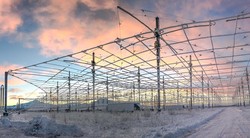
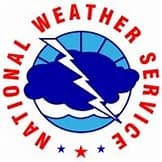 Warning Coordination Meteorologist Brandon Peloquin at the Wilmington, Ohio, NWS office said many of the NWS offices across the country meet with partner organizations in the spring to make plans for the weather ahead.
Warning Coordination Meteorologist Brandon Peloquin at the Wilmington, Ohio, NWS office said many of the NWS offices across the country meet with partner organizations in the spring to make plans for the weather ahead.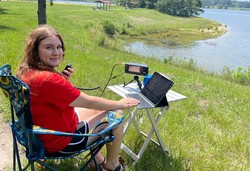
.jpg)
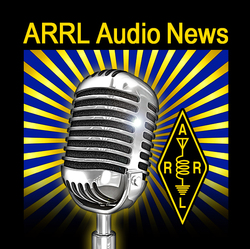 Listen to
Listen to 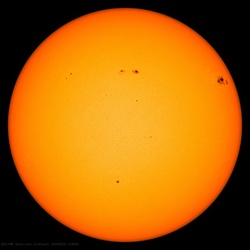
-Blue.jpg)








